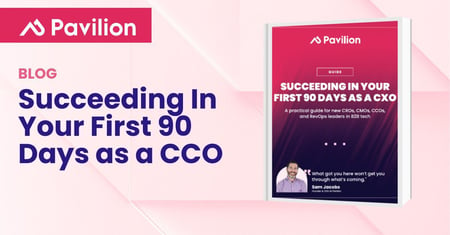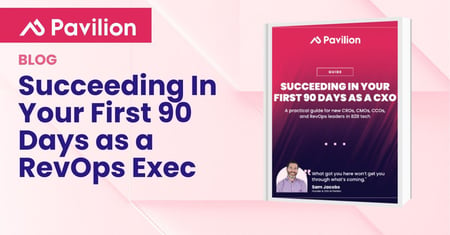
The title on your LinkedIn might say “Chief Revenue Officer.” But in practice? You’ve inherited something a lot more complex than a job title.
You’ve inherited a system. Or, more accurately, the remnants of one.
Welcome to the CRO seat in 2025, where Sales is only the visible part of the engine. Underneath lies a tangle of misaligned handoffs, underperforming segments, RevOps debt, rep churn, and lingering trauma from quarters that fell short. Your onboarding isn’t about “taking over.” It’s about re-architecting a system that works from pipeline creation to customer expansion, across every GTM touchpoint.
And that starts on day one. If you want a proven roadmap for the first 90 days, including how to align your peers, refine your forecast, and lead with confidence, explore our comprehensive onboarding guide for new CROs.
In your first month, it’s tempting to dive straight into the sales org. After all, your name is on the forecast. But most early symptoms — pipeline gaps, slumping win rates, soft forecasts — aren’t sales problems. They’re systems problems.
Before you “fix” anything, step back. Ask: Where is the breakdown really happening?
Start by asking better questions. Especially of your ELT peers. Ask the CMO what they need from Sales that they’re not getting. Ask the Head of CS what’s breaking in post-sale handoffs. Ask Product how your team can align to roadmap realities.
Also, get under the hood of the forecast. What’s the math behind the number? Do the stage definitions make sense? Are managers inspecting deals with rigor or rubber-stamping rep notes? Your credibility is earned here, not in your first board meeting but in your first forecast inspection.
For a firsthand perspective on this phase, listen to Confessions of a First-Time CRO with Catie Ivey (CRO at Walnut). In this episode of the Revenue Leadership Podcast, Catie shares how she navigated early misalignment, rebuilt her GTM motion, and earned credibility in her first year on the job.
By month two, the listening phase is over. Now it’s about synthesis. Your peers expect a point of view. Your team wants clarity. And your CEO wants signals that the system is stabilizing.
That means setting rhythm and infrastructure:
If you do one thing well in this phase, make it this: Align the org around forecasting and pipeline coverage. Not just the number — the methodology behind it. Can you trust it? Can you explain it? Can you use it to make decisions?
Need help designing playbooks and cadences that drive behavior change? In his Pavilion podcast episode, Creating, Developing, and Deploying Playbooks, Kevin “KD” Dorsey explains how to build systems reps will actually use. It’s a must-listen for new CROs designing operational infrastructure.
In your third month, shift from strategy to execution. Don’t try to fix everything. Choose one or two initiatives that demonstrate traction and reinforce your leadership style.
For example:
This is also the phase where you begin to evaluate your leadership team. You don’t need to make personnel changes yet, but you do need to assess which managers can scale — and which ones are maintaining status quo.
Finally, circle back with your CEO and executive peers. Demonstrate how your early moves are not only improving GTM execution but reinforcing cross-functional accountability.
You weren’t hired just to hit the number. You were hired to restore trust in how revenue is built.
And as Pavilion member Emmanuel Richard, Chief Growth Officer at Opensee, reminds us — it starts with credibility.
“For a new CRO, above anything else, you have to become the best salesperson in the company. That means understanding your product or service better than anyone except the engineers. Beyond features, you need to grasp the architecture, the pillars, and the user experience you’re offering to each persona — and the benefit delta you’re creating compared to today.”
Modern GTM teams don’t just need a strong seller at the helm. They need a systems thinker, someone who can orchestrate forecasting, execution, and growth in a market where predictability is scarce.
Pavilion’s CRO School is built specifically for this mandate. Designed for revenue leaders who want to scale confidently and lead at the executive level, CRO School covers GTM org design, planning, financial modeling, and leadership. Learn more and enroll in the next cohort.
And if you haven’t yet downloaded the 30-60-90 Day Onboarding Plan for CROs, this is your tactical companion for every week of your ramp.
The CRO playbook is being rewritten — and operators like you are leading the way.

